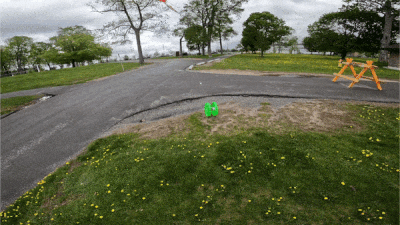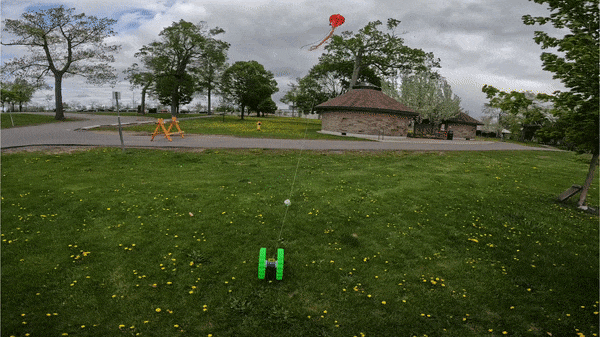Can the kite do Work? This question formed the basis of the hypothesis: when the kite is pushed from the wind, the tension on the line transfers to the wheel, causing the wheel to roll and have a displacement by moving a distance.
Time for an outdoors experiment. Winds: 20 km/h WNW. Conditions: pouring rain then turned to overcast.

There are numerous ways this experiment could not work:
- Not enough drag force from the kite
- Not powerful enough winds
- Kite not large enough
- Roll wheels too heavy
- Remains in place
- Friction too much
- Remains in place
A baseline understanding is needed. This experiment will test to see if the kite can move the wheels. Yes! It does work!
Learnings from this experiment:
- Sometimes the wheels can tip over
- Need a more secure way of tying the line at a certain distance

A discovery from this experiment is that perhaps another method of control could be to move the two wheels themselves. The motors could serve as generators when not active. However, it would come with the large downside of the device not being stationary. If this were on Mars, it would be a benefit, as there are vast areas to explore.
This is where the conveyor belt idea is useful (see previous progress log) — it would remain stationary.
W=Fd. That is Work, and it’s measured in Joules. From there, we can get Power, which is the rate at which Work is done (P = W/t), measured in Watts. Further down the line, this can help for efficiency calculations when compared to the generator motors.
What’s next? More work on the steering module
 EK
EK
Discussions
Become a Hackaday.io Member
Create an account to leave a comment. Already have an account? Log In.